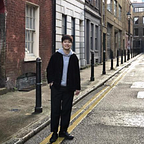It Is Time to Redesign the Streets
The increasing urbanization demands the innovation of transportation modes and a reform street designs for micro-mobility. Electric scooters and bike sharing system provide the alternative way to commute in urban environment, and try to solve “the first and the last mile problem”. Although new forms of transportation have emerged, the design of street remains unchanged and inefficient. Many cities do not have bike lanes, and even in big cities like New York, the planning of bike lanes is still crowded and unregulated.
Recently, New York City DOT has published a new design for New York City intersections, in which bike lanes are protected by mixing zones and fully split phase intersections at crossroads. The study includes a crash data analysis, video observations, and surveys to acquire a comprehensive understanding of the safety effect, design, behaviors, and bicyclist perceptions for different designs. As a result, the research indicates that the mixing zones and fully split phase reduced the bicycle crash rate at intersections by 30%. The new design has been tested in several intersections in New York City including one at Columbus Avenue and 70th Street. DOT attempts to test different designs in other cross-sections to reduce the danger of the turning zones.
The shared-street mentality behind this project echoes with the urgent need for redesigning the streets. It not only prevents cyclists, skateboarders and scooters from accidents in intersections, but also guides us as citizens to think about how to use our limited public space more efficiently and safely.
In private sector, electric scooter giant Bird has also announced an initiative to provide cities funding on street infrastructure, and to help design more modern planning to accommodate the diverse forms of transportation and high demand for street space.
Both cities and companies have realized the impotence of redesigning streets, but there are still many obstacles remained on the way. With the limited space, cities need to decide the priorities of transportation modes, while taking factors like safety, accessibility, and fairness into account. The next step for both cities and companies is to get to know more about their citizens (users), and to understand their behaviors and needs so that the use of limited space could be optimized.
